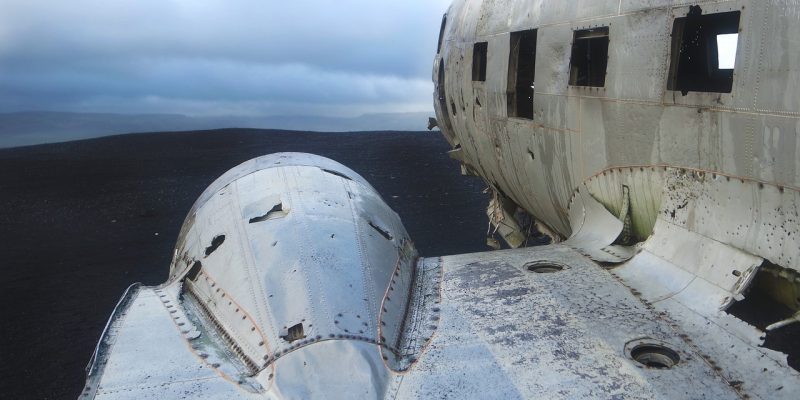When it comes to aviation, there is no denying the fact that plane crashes are some of the most tragic and horrifying events that can occur. In this article, we will delve into the stories behind ten of the most devastating plane crashes in history, shedding light on the events that unfolded and the impact they had on aviation safety.
These plane crashes serve as a stark reminder of the risks involved in air travel and the importance of continuous improvement in safety measures. By exploring the details of these tragic events, we can gain a deeper understanding of the factors that contributed to their occurrence and the lessons learned that have shaped aviation safety protocols today.
1. Tenerife Airport Disaster
The Tenerife Airport Disaster is known as the deadliest aviation accident in history, claiming the lives of 583 individuals. This tragic event occurred on March 27, 1977, at Los Rodeos Airport (now known as Tenerife North Airport) in the Canary Islands. The disaster was the result of a collision between two Boeing 747 aircraft, one operated by Pan Am and the other by KLM.
The chain of events leading to the collision was a combination of unfortunate circumstances and miscommunication. Dense fog enveloped the airport, reducing visibility to a minimum. As a result, the air traffic controllers faced challenges in managing the traffic on the ground. The KLM aircraft attempted to take off without proper clearance while the Pan Am aircraft was still on the runway, leading to the catastrophic collision.
The impact of the collision and subsequent explosion resulted in the immediate loss of all 248 passengers and crew on board the KLM aircraft and 335 passengers and crew on board the Pan Am aircraft. The Tenerife Airport Disaster serves as a tragic reminder of the importance of effective communication, proper procedures, and situational awareness in aviation safety.
2. Air France Flight 447
Uncovering the mystery surrounding the tragic disappearance of Air France Flight 447 is a chilling reminder of the dangers that can lurk in the skies. This devastating incident occurred on June 1, 2009 when the Airbus A330-203 aircraft vanished while en route from Rio de Janeiro to Paris. The flight crashed into the Atlantic Ocean, claiming the lives of all 228 passengers and crew on board.
The loss of Air France Flight 447 sent shockwaves through the aviation industry and sparked a massive search and rescue operation. The wreckage was eventually located deep beneath the ocean surface, but the cause of the crash remained shrouded in mystery for years.
With no distress signal or communication from the pilots, investigators faced a daunting task in piecing together what had happened. The black boxes, which contained crucial flight data and cockpit voice recordings, were recovered after an arduous search. The analysis of these recordings provided valuable insights into the final moments of the ill-fated flight.
It was determined that the aircraft encountered severe weather conditions, including thunderstorms and turbulence, during its journey. The combination of technical malfunctions and human error ultimately led to the tragedy. The pilots struggled to maintain control of the plane as it experienced a series of sensor failures and entered a stall. Despite their efforts, the aircraft plunged into the ocean, leaving no survivors.
The crash of Air France Flight 447 highlighted the importance of improving safety measures and addressing the vulnerabilities in aviation systems. It prompted significant changes in pilot training, aircraft design, and communication protocols. The tragedy served as a catalyst for advancements in technology and procedures aimed at preventing similar incidents in the future.
2.1 The Investigation and Findings
The investigation into the crash of Air France Flight 447 was a complex and extensive process aimed at uncovering the cause of the tragedy and implementing measures to prevent similar incidents in the future. The crash, which occurred on June 1, 2009, claimed the lives of all 228 passengers and crew on board.
The investigation team consisted of experts from various fields, including aviation, engineering, and meteorology. They meticulously analyzed the available evidence, including data from the flight recorders, wreckage, and satellite imagery. Their goal was to piece together the sequence of events leading up to the crash and identify any contributing factors.
After months of analysis and simulations, the investigation team concluded that a combination of factors had led to the crash. These factors included technical malfunctions, inadequate pilot training, and a lack of awareness regarding the aircraft’s automation systems. The investigation also revealed deficiencies in the airline’s safety procedures and the industry’s overall approach to pilot training and oversight.
As a result of the investigation’s findings, significant changes were made in the aviation industry to enhance safety. Airlines and regulatory authorities implemented new training programs and procedures to address the issues identified in the investigation. These measures focused on improving pilots’ understanding of automation systems, enhancing their decision-making skills, and promoting effective communication within the cockpit.
The investigation and subsequent safety improvements serve as a reminder of the importance of continuous learning and improvement in the aviation industry. By analyzing past accidents and implementing necessary changes, the industry strives to prevent similar tragedies from occurring in the future, ensuring the safety of passengers and crew.
2.1.1 Pilot Error and Automation Dependency
Explore the role of pilot error and overreliance on automation systems in the tragic accident, shedding light on the importance of human factors in aviation safety.
In the case of Air France Flight 447, pilot error and automation dependency played a significant role in the tragic accident. The investigation revealed that the pilots lacked proper training and experience in handling critical situations manually, relying heavily on automated systems to fly the aircraft.
During the flight, the aircraft encountered severe weather conditions, causing the autopilot to disengage. Instead of taking immediate control of the plane, the pilots struggled to understand the situation and failed to apply the necessary manual flying techniques. This delay in response led to the aircraft stalling and ultimately crashing into the Atlantic Ocean.
This incident highlighted the importance of human factors in aviation safety. While automation systems are designed to enhance efficiency and accuracy, pilots must maintain their skills and be prepared to handle emergencies without relying solely on technology. Adequate training and experience are crucial to ensure pilots can effectively respond to unexpected situations and make informed decisions.
Following the crash of Air France Flight 447, aviation authorities implemented enhanced training programs and procedures to address the issue of automation dependency. Pilots are now trained to maintain proficiency in manual flying skills and to effectively communicate and collaborate with automation systems. This shift in focus emphasizes the need for a balanced approach between human capabilities and technological advancements in aviation.
2.1.2 Enhanced Training and Procedures
Following the tragic crash of Air France Flight 447, significant changes were made to pilot training and procedures to enhance aviation safety. These changes were implemented to address the communication, decision-making, and handling of critical situations in the cockpit.
One of the key improvements was a greater emphasis on crew resource management (CRM), which focuses on effective communication and teamwork among the flight crew. Pilots are now trained to work together seamlessly, sharing information and making collective decisions to ensure the safe operation of the aircraft.
In addition, enhanced training programs were introduced to help pilots develop better decision-making skills. They are taught to analyze situations more effectively, assess risks, and prioritize actions in high-stress scenarios. This training equips pilots with the necessary tools to make sound judgments and respond appropriately to unexpected events.
Furthermore, procedures were revised to provide clearer guidelines for handling critical situations. Pilots are trained on standardized protocols to follow in emergencies, ensuring a consistent and effective response. These procedures help minimize confusion and improve the efficiency of actions taken during critical moments.
The changes made to pilot training and procedures following the Air France Flight 447 crash have had a significant impact on aviation safety. By focusing on communication, decision-making, and handling of critical situations, these enhancements strive to prevent similar accidents from occurring in the future.
2.2 Lessons Learned and Legacy
Reflecting on the tragic Air France Flight 447 crash, it is evident that the incident has had a profound impact on the aviation industry. One of the significant lessons learned from this devastating event is the importance of advancements in aircraft tracking technology. Following the crash, there was a heightened focus on improving the tracking capabilities of aircraft to ensure better monitoring and response in case of emergencies.
As a result, various initiatives were implemented to enhance aircraft tracking systems, including the development of new technologies such as Automatic Dependent Surveillance-Broadcast (ADS-B) and the Global Aeronautical Distress and Safety System (GADSS). These advancements have revolutionized the way aircraft are monitored, providing real-time data on their location, altitude, and speed.
In addition to the advancements in tracking technology, the Air France Flight 447 crash also emphasized the importance of crew resource management. This concept highlights the significance of effective communication, teamwork, and decision-making among the flight crew during critical situations.
Following the crash, there was a renewed emphasis on training programs and procedures that focus on enhancing crew resource management skills. This includes simulated scenarios and exercises that enable pilots and crew members to effectively handle emergencies, make informed decisions, and work collaboratively to ensure the safety of the aircraft and its passengers.
The legacy of the Air France Flight 447 crash serves as a constant reminder of the need for continuous improvement in aviation safety. The advancements in aircraft tracking technology and the emphasis on crew resource management have undoubtedly contributed to enhancing the overall safety standards in the industry, ensuring that similar tragedies can be prevented in the future.
3. Malaysia Airlines Flight 370
Malaysia Airlines Flight 370 is a haunting mystery that continues to baffle experts and captivate the world. On March 8, 2014, the Boeing 777 aircraft disappeared en route from Kuala Lumpur to Beijing, with 239 people on board. The sudden and unexplained vanishing of the plane has left behind a trail of unanswered questions and grieving families.
The disappearance of Malaysia Airlines Flight 370 sparked one of the largest search operations in aviation history. Despite extensive efforts by multiple countries, the wreckage and the exact location of the aircraft remain unknown. The lack of concrete evidence and the absence of closure have only deepened the mystery surrounding this tragic incident.
3.1 The Disappearance and Search Efforts
One of the most perplexing cases in aviation history is the disappearance of Malaysia Airlines Flight 370. The events leading up to the flight’s disappearance remain shrouded in mystery, leaving behind unanswered questions and grieving families.
The flight, carrying 239 passengers and crew members, vanished from radar screens on March 8, 2014, during a routine flight from Kuala Lumpur to Beijing. Despite extensive search efforts, the wreckage and the exact location of the plane have never been found.
The multinational search efforts that followed the disappearance spanned vast areas of the Indian Ocean, making it one of the most extensive and challenging search operations in history. Multiple countries, including Australia, Malaysia, and China, collaborated in the search, deploying ships, aircraft, and sophisticated underwater technology.
The search efforts involved analyzing satellite data, conducting underwater surveys, and examining debris that washed up on the shores of various countries. However, despite these extensive efforts, the fate of Malaysia Airlines Flight 370 remains unknown, leaving investigators and the aviation industry puzzled.
3.2 Speculations and Theories
When it comes to the fate of Malaysia Airlines Flight 370, there is no shortage of speculations and theories that have captured the public’s attention. From mechanical failures to deliberate actions, each hypothesis adds a layer of intrigue and fuels ongoing debate.
One of the prevailing theories suggests that a catastrophic mechanical failure caused the plane to go off course and ultimately crash into the Indian Ocean. This theory is supported by the fact that the aircraft’s communication systems were disabled, indicating a sudden and unexpected event. However, without concrete evidence, this theory remains speculative.
Another theory that has gained traction is the possibility of deliberate actions taken by someone on board the aircraft. This theory suggests that the plane was intentionally diverted from its original flight path, raising questions about the motives and intentions of those involved. However, without any conclusive evidence or a clear motive, this theory remains purely speculative.
The speculations and theories surrounding the fate of Malaysia Airlines Flight 370 continue to captivate the public’s imagination. As investigators and experts work tirelessly to uncover the truth, the mystery surrounding this tragic event persists, leaving grieving families and the world at large searching for answers.
Frequently Asked Questions
- Q: What was the deadliest aviation accident in history?
A: The Tenerife Airport Disaster holds the unfortunate record for being the deadliest aviation accident in history. It occurred when two planes collided on the runway, resulting in the tragic loss of 583 lives.
- Q: What happened to Air France Flight 447?
A: Air France Flight 447 crashed into the Atlantic Ocean, leading to the loss of all 228 passengers and crew on board. The exact cause of the crash remained a mystery for some time.
- Q: What were the findings of the investigation into Air France Flight 447?
A: Extensive investigations revealed that the crash was primarily caused by pilot error and overreliance on automation systems. This tragic accident shed light on the importance of human factors in aviation safety.
- Q: What changes were made following the Air France Flight 447 crash?
A: The crash led to enhanced pilot training and procedures, focusing on improving communication, decision-making, and handling critical situations. These changes aimed to prevent similar accidents in the future.
- Q: What is the legacy of Air France Flight 447?
A: The crash of Air France Flight 447 prompted advancements in aircraft tracking technology and emphasized the importance of crew resource management. These developments have contributed to enhancing aviation safety.
- Q: What happened to Malaysia Airlines Flight 370?
A: Malaysia Airlines Flight 370 disappeared without a trace, leaving behind unanswered questions and grieving families. The fate of the flight remains a perplexing mystery.
- Q: What efforts were made to search for Malaysia Airlines Flight 370?
A: Extensive multinational search efforts were conducted to locate Malaysia Airlines Flight 370. These efforts spanned vast areas of the Indian Ocean, but the aircraft has yet to be found.
- Q: What are the speculations and theories surrounding Malaysia Airlines Flight 370?
A: Various speculations and theories have emerged regarding the fate of Malaysia Airlines Flight 370. These range from mechanical failures to deliberate actions, fueling public intrigue and ongoing debate.









